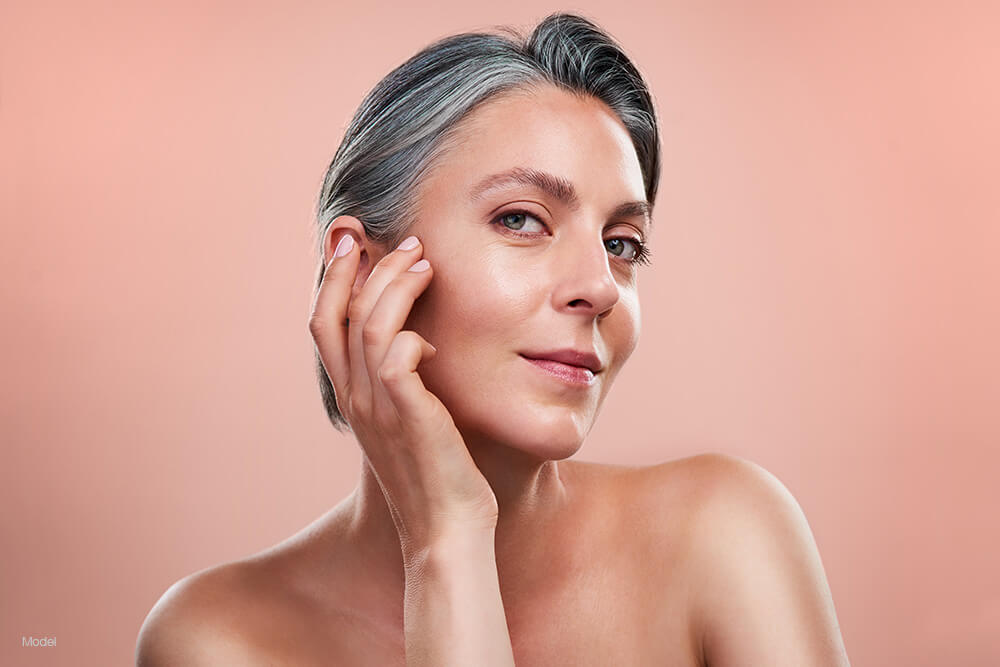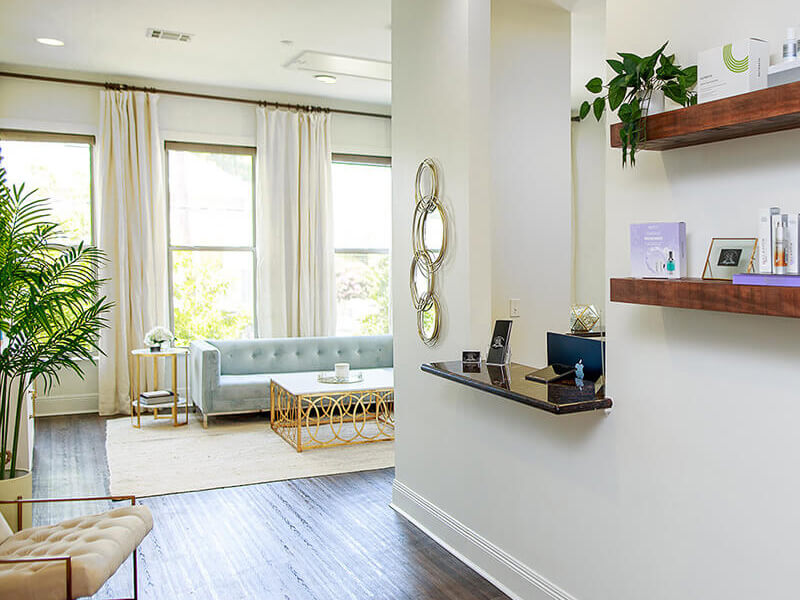Posted July 09, 2025 in Blepharoplasty

Blepharoplasty, also known as eyelid surgery, is a popular cosmetic procedure designed to enhance the appearance of the eyes. It eliminates excess tissue and skin that tend to obstruct your field of vision and rejuvenates the eye’s appearance by reducing wrinkles, puffiness, and sagging. Whether you are considering an upper eyelid surgery, a lower eyelid surgery, or both, here is what you should expect during your blepharoplasty recovery.
4 Min Read:
Blepharoplasty Recovery Timeline
Every patient is unique, and so, too, are their healing journeys. However, there are common experiences that most patients can expect during their recovery. Below is a general overview of the projected timeline for blepharoplasty recovery.
The First 24 Hours After Surgery: All About Rest
The first day after your procedure should be dedicated to rest and recovery. Your eyes might feel sore, tight, or swollen. You may also experience blurred vision after applying the provided ointment to your eyes. Puffiness and bruising are expected. Here is what to do to improve comfort and accelerate healing and recovery:
- Plan to spend a relaxing day at home and focus on resting
- Use cold compresses to alleviate swelling
- Keep your head comfortably elevated
- Avoid touching or rubbing your eyes
- Take pain medication as prescribed by your surgeon
Days 2–3: Swelling Peaks
Bruising and swelling may significantly increase before they begin to improve. Teary eyes and redness are also common in the first few days. Here are some tips to guide you through:
- Always keep your head elevated, even when sleeping
- Avoid bending, strenuous workouts, or lifting heavy objects
- Continue using cold compresses on your eyes to reduce swelling
Days 4–7: Early Healing
About 4 days to one week post-op, swelling reduces significantly, and bruising starts to fade away. You may need to return to your surgeon’s office to have your stitches removed if they are not dissolvable. Most people feel more comfortable opening their eyes. Here is what to expect:
- Minor itchiness and slight discomfort
- You might feel strong enough to return to light daily activities
- Increased tear production
- Some patients experience dry eyes
Week 2: Visible Improvements
Most people start to see visible improvements about two weeks after eyelid surgery. Bruising continues to fade and becomes less noticeable while swelling gradually decreases. You might feel well-recovered and strong enough to return to work, work out, and join social gatherings, but we recommend that you take it easy. Some patients opt to apply makeup to conceal any lingering discoloration. Remember to:
- Avoid strenuous exercises and workouts
- Wear sunglasses when stepping out to protect your eye area
- Strictly follow your surgeon’s instructions for cleaning, care, and maintenance
Week 3–4: Settling In
By around the third to fourth week, the incisions are healing well, and your eyes start to regain a natural appearance. Most people are now fully back to their usual routines. You may still experience slight swelling, especially in the morning, but it should be minimal and tend to subside throughout the day. During this time, you may:
- Begin gentle facial exercises
- Resume your normal skincare routine
- Notice your eyes appear brighter and refreshed
One Month to Three Months: Your New Normal
Your final results will be increasingly apparent. Blepharoplasty scars continue to fade as they blend into the natural creases of your eyelids. Most residual swelling will have disappeared by now. Long-term care tips:
- Always protect your eyes from the sun
- Stick to your scheduled follow-up visits
- Stick to a safe and consistent skincare routine
When to Call Your Doctor
Some patients experience dry eyes after surgery. However, this should not last for more than two weeks. If you experience dry eyes for more than two weeks, consult your surgeon. Also, call your surgeon if:
- You experience excruciating pain even after taking the prescribed pain medication
- Your incision comes open
- Your incision is bleeding
- You have signs of infection, such as fever, extreme swelling, and redness leading from the incision
- You notice pus draining from the incision
- You have swelling and redness or swelling on your leg or groin areas
Blepharoplasty Recovery Tips
Here are some additional tips to make your recovery smooth and effective:
- Avoid alcohol and smoking, as these can delay your healing process
- Keep your face clean and dry, taking care to gently cleanse your eye area
- Avoid wearing contact lenses for at least two weeks or as directed by your surgeon
- Eat a nutritious diet and stay well-hydrated
- Be patient—we are all unique with different healing and recovery paces
Interested in Blepharoplasty in New Orleans, LA?
If you have been considering eyelid surgery, you should start by seeking the guidance of a board-certified plastic surgeon. Fortunately, Dr. Heath Charvet is here to walk with you every step of the way. His advanced and innovative eyelid surgery techniques are designed to help you look youthful, confident, and refreshed. Ready to take the first step? Call us at (504) 571-5908 or use our online contact form to schedule your consultation.

